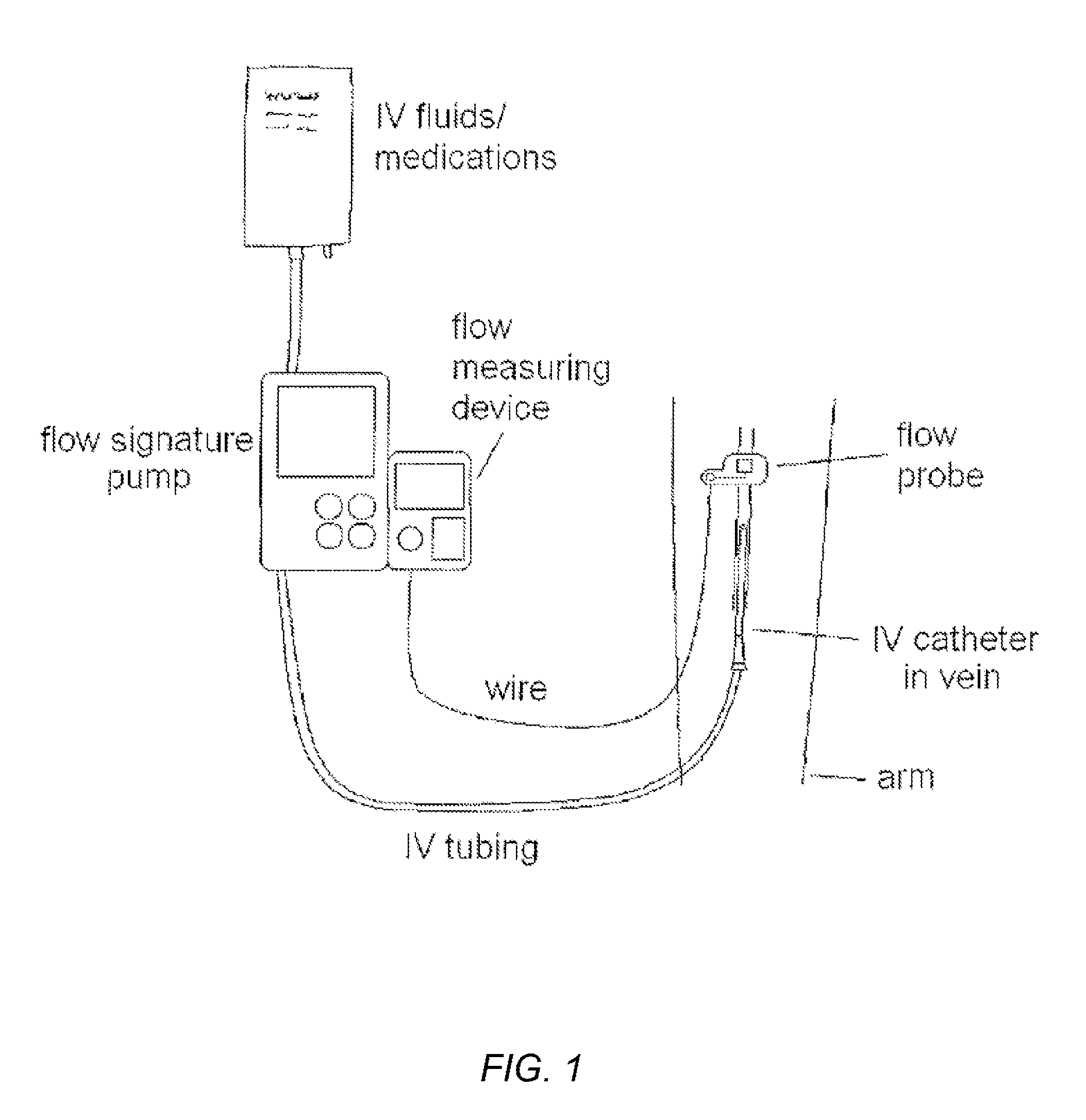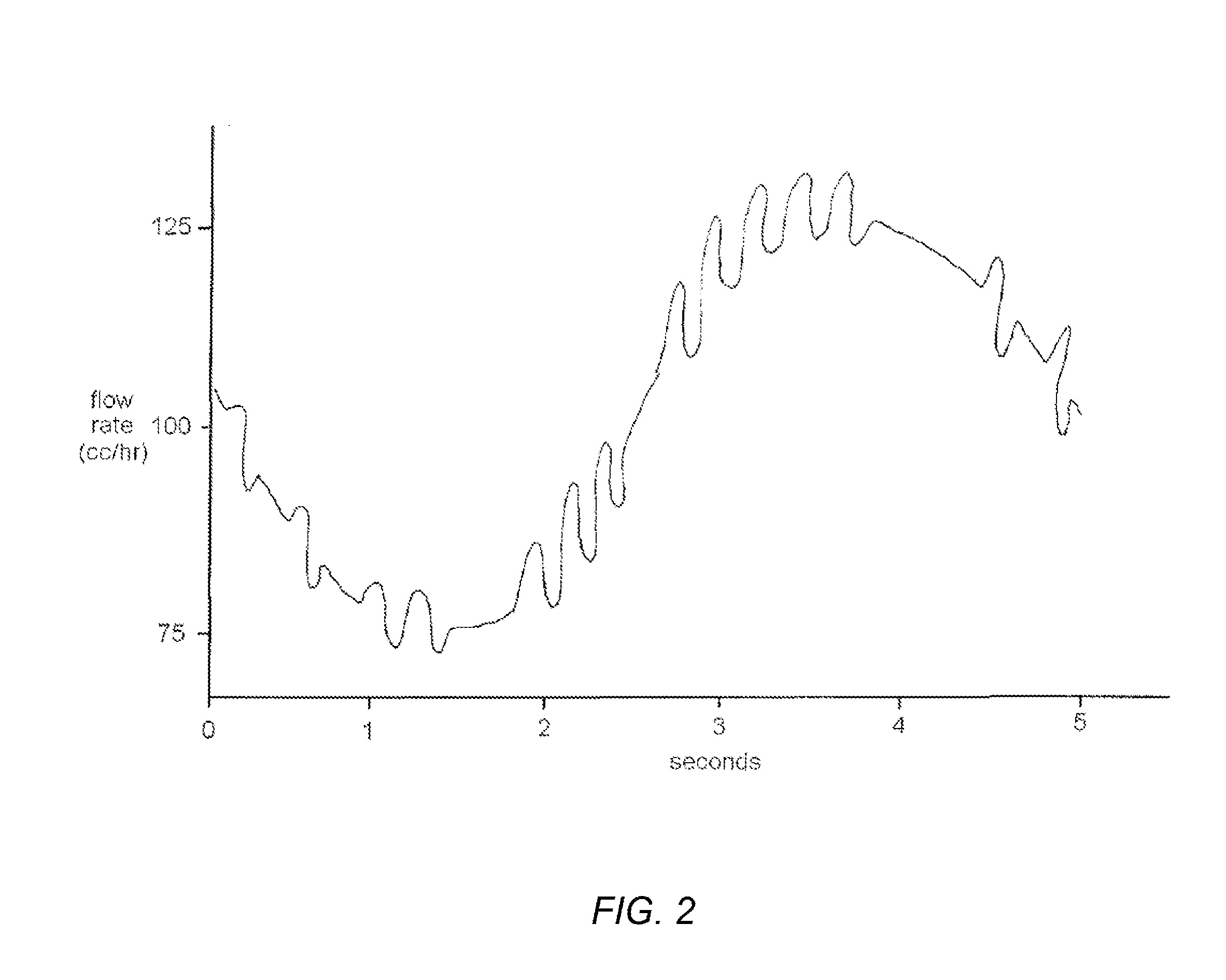System of intravenous fluid/medication delivery that employs signature flow amplitudes or frequencies to facilitate the detection of intravenous infiltration
a technology of intravenous fluid and signature flow, which is applied in the field of intravenous fluid delivery system and methods of monitoring intravenous catheter/cannulaassociated venous occlusion, can solve the problems of substantial patient morbidity, tissue swelling and tissue damage, and practices that have not clearly been demonstrated to reduce the rate of phlebitis, etc., and achieve the effect of altering the polarity of the magnetic field generated by the magnetic coil
- Summary
- Abstract
- Description
- Claims
- Application Information
AI Technical Summary
Benefits of technology
Problems solved by technology
Method used
Image
Examples
Embodiment Construction
[0034]As discussed above, when phlebitis occurs the vein becomes occluded. As a result, fluid flow in the vein ceases and fluid flow is diverted to the extra-vascular subcutaneous tissues, causing tissue swelling and damage. Approaches to identifying IV infiltration early would be to identify the interruption of the flow of IV fluids in the vein downstream of the IV device and / or to identify electrical changes in the extra-vascular subcutaneous tissues due to tissue swelling. Conventional IV delivery systems deliver a slow, uniform flow of IV fluids at a set rate which is difficult to monitor and the interruption of such flow may produce a non-specific signal change. If IV fluids were delivered using signature flow frequencies and / or amplitudes, preserved flow in the downstream vein would be more readily identifiable as would its interruption. Furthermore, measurement of electrical changes in the tissues might be able to identify the transfer of the signature flow frequency and / or a...
PUM
 Login to View More
Login to View More Abstract
Description
Claims
Application Information
 Login to View More
Login to View More - R&D
- Intellectual Property
- Life Sciences
- Materials
- Tech Scout
- Unparalleled Data Quality
- Higher Quality Content
- 60% Fewer Hallucinations
Browse by: Latest US Patents, China's latest patents, Technical Efficacy Thesaurus, Application Domain, Technology Topic, Popular Technical Reports.
© 2025 PatSnap. All rights reserved.Legal|Privacy policy|Modern Slavery Act Transparency Statement|Sitemap|About US| Contact US: help@patsnap.com



